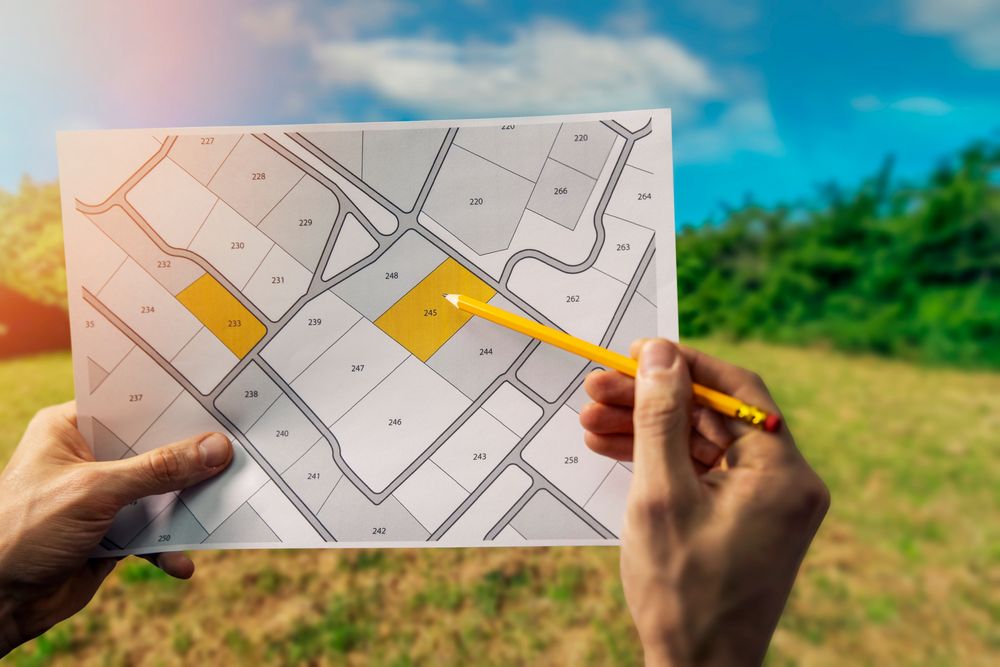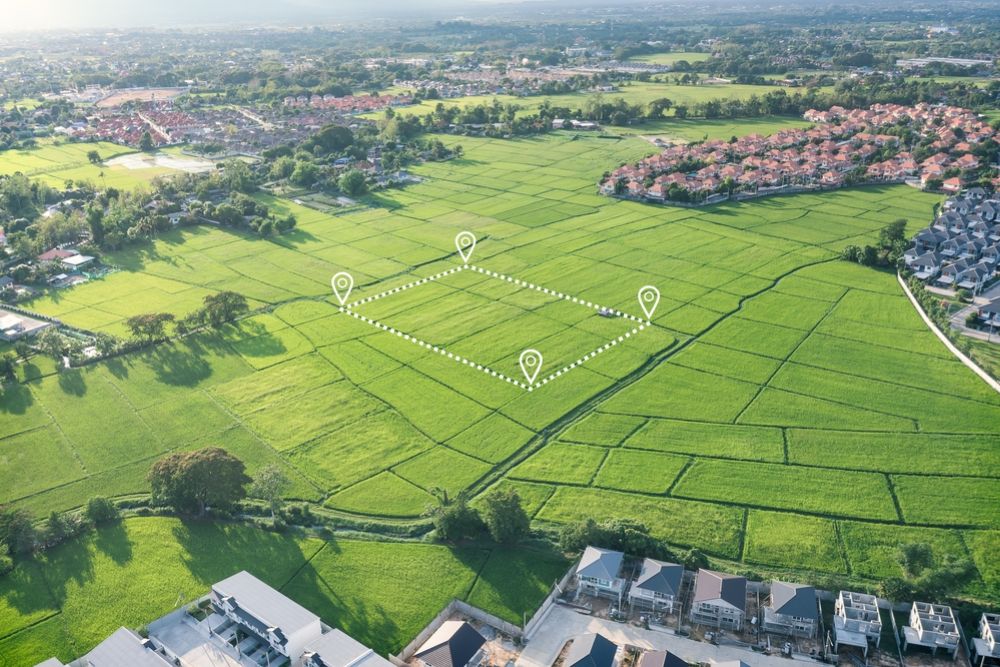Buying land can be a pivotal step toward building your dream home, starting a business, or investing in real estate. However, the process is often more complex than purchasing a pre-constructed property. Land transactions involve considerations ranging from zoning laws and environmental factors to utility access and financing. This guide will help you navigate some of the most crucial points to ensure you make a well-informed decision when buying land.
1. Clarify Your Purpose and Vision
Why It Matters
Before you start browsing listings or meeting with agents, be clear about what you plan to do with the land. The intended use—be it residential, agricultural, commercial, or recreational—will shape your research and decision-making.
Questions to Ask
- Building a Home: Are you aiming for a single-family house, a vacation cabin, or a future retirement residence?
- Agricultural or Livestock: Do you need fertile soil or access to water sources for farming, or enough space and pastureland for animals?
- Commercial or Industrial: Are you planning to develop retail, office, or warehouse spaces that must meet local business regulations?
- Investment or Resale: Is your primary goal to hold the land until its value increases, or to immediately develop it for rental or resale?
Takeaway
Defining your vision from the outset helps focus your search on properties that can realistically fulfill your goals. Zoning restrictions or environmental conditions can make certain plots unsuitable for particular uses, so clarity is key.
2. Location, Accessibility, and Neighborhood
Why It Matters
As with any real estate purchase, location heavily influences both the land’s value and its feasibility for your project. Proximity to cities, major roads, or essential services can determine how convenient or profitable the land will be to own or develop.
Considerations
- Accessibility: Can you easily reach the property via public roads? If it’s only accessible by private lanes, do you have easement rights?
- Surrounding Infrastructure: Are there nearby schools, hospitals, shopping centers, or public utilities that enhance the land’s appeal?
- Community and Neighborhood: If building a residence, is the area’s character (urban, suburban, rural) in line with your lifestyle?
- Future Development Plans: Check municipal or county plans for upcoming projects—like highways or commercial zones—that could affect the land’s long-term value or noise levels.
Takeaway
Land with good infrastructure and easy access to essential services typically retains (and can grow) in value, while remote or hard-to-reach plots might be cheaper but could demand more investment in roads, utilities, or commuting time.
3. Zoning and Land-Use Regulations
Why It Matters
Zoning laws govern what can be built on a plot of land—residential, agricultural, commercial, or mixed use—and sometimes even set constraints on building height, minimum lot size, or design guidelines.
Steps to Research
- Check Local Zoning Maps: Contact the local planning department or research online resources to see the zoning classification (e.g., R1 for single-family residential, C for commercial, or agricultural designations).
- Variance or Re-Zoning: If the current zoning doesn’t match your intended use, investigate whether you can apply for a zoning variance or re-zoning. But keep in mind, these processes can be lengthy and uncertain.
- Homeowners’ Associations (HOA): If the land is in a community with an HOA, confirm if there are additional covenants, codes, and restrictions.
Takeaway
Understanding zoning not only confirms if your plans are legal but can also reveal potential roadblocks. If necessary, factor in time and fees for any zoning changes or variances you might seek.

4. Environmental and Physical Factors
Why It Matters
Topography, floodplains, soil type, and environmental constraints can significantly impact the cost and feasibility of developing land. Overlooking these aspects may lead to unexpected excavation, engineering, or remediation expenses.
What to Investigate
- Soil Quality: For building foundations, stable soil types are crucial. Clay or sandy soils might require special (and expensive) engineering solutions. Farmers need nutrient-rich, well-draining soil.
- Flood Zone or Wetlands: Building in a floodplain or near wetlands can require special permits, elevated construction, or can limit building footprint altogether.
- Slope and Topography: Heavily sloped land may offer stunning views but can demand costly grading or foundation work.
- Environmental Restrictions: Certain ecosystems are protected (like wetlands or habitats for endangered species), restricting development possibilities.
Takeaway
A professional land survey and environmental assessment can save you money and heartache by identifying hidden obstacles before purchase.
5. Utilities and Infrastructure
Why It Matters
Raw land might not have immediate access to electricity, water, sewer, or internet—connecting them can be expensive and complex. Ensuring your plot has or can feasibly gain these services helps prevent costly surprises.
Key Utilities
- Water: Is there municipal water service? If not, can you drill a well? How deep is the water table?
- Sewer or Septic: In rural areas, you may need to install a septic system—check if the soil percolates well.
- Electricity: Distance from power lines can drastically inflate costs for hooking up.
- Internet/Phone: Confirm broadband availability or if satellite solutions are your only option.
- Gas: Some regions might rely on propane tanks if natural gas lines are absent.
Takeaway
Investigate the cost and feasibility of bringing utilities to the site. In certain rural or undeveloped plots, hooking up utilities can be more expensive than the land itself.
6. Financing and Budgeting
Why It Matters
Land loans typically differ from conventional home mortgages. They can come with higher interest rates, shorter repayment terms, and require larger down payments, especially if the land is undeveloped.
Financing Tips
- Down Payment: Expect 20–50% if there’s no immediate plan to develop the land. Lenders see raw land as higher risk.
- Construction Loans: If you plan to build soon, a construction loan might help finance both land purchase and building costs, rolling into a mortgage after completion.
- Seller Financing: In some cases, the seller might offer financing, often with fewer hurdles but potentially higher interest rates.
- Overall Budget: Include costs for land surveys, lawyer fees, utility connections, and potential site work (like grading or clearing).
Takeaway
Clarify your financing route early. Crunching the numbers on monthly payments and additional development expenses ensures you don’t become cash-strapped partway through.
7. Title, Boundaries, and Legal Checks
Why It Matters
Boundary disputes or unclear titles can lead to legal complications. A thorough title search and a professional boundary survey prevent unwelcome surprises about encroachments or easements.
Checklist
- Title Search: Confirms ownership history, ensures the seller has the right to transfer the property, and reveals any liens or encumbrances.
- Boundary Survey: Precisely outlines property lines. Fences or markers might not reflect the actual legal boundary, especially if the land is large or rural.
- Easements: Some plots have utility or road easements granting others partial access. Understand these rights and how they might affect your usage.
Takeaway
Professional surveys and title checks are well worth the cost for peace of mind, clarifying the exact extent of the land you’re buying and ensuring no hidden claims.
Buying land isn’t just about finding a scenic plot with potential—it requires thorough due diligence, from understanding zoning codes and environmental factors to factoring in utility costs and financing challenges. Start by defining the purpose of your land purchase, then delve into the specifics—like topography, utility access, or local regulations—to confirm it suits your needs.
While the process can be more complex than purchasing a ready-made home, the rewards of owning a piece of land you can truly shape are immense, whether you’re cultivating farmland, building a dream house, or holding it for future development. By investing time and research upfront—securing detailed surveys, clarifying boundaries, and analyzing possible construction or utility hurdles—you’ll approach the transaction with confidence. Ultimately, a thoughtful approach ensures that your plot of land becomes the sturdy foundation for whatever you envision, setting you on a path to success rather than unpleasant surprises.





